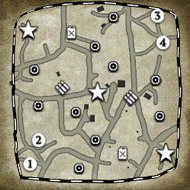Start since 1:03:05
Against 2 OKW in rails and Metal
I suck at 2v2, am a noob, and I am not a strategist. You should also post a replay instead of a video. And that map position is probably bad for USF.
1. Your panic bunker put you behind. I do it too. Best to not put it up unless you OWN the ground and have support. Or you are basically losing a squad. I do not think I have ever seen a pro make a bunker?
2. Your Brit partner was doing well but you did not support him when he got pushed. You could have moved more to his side and pushed together. Which you did when your Stuart came out. 2v2 seems to be all about the 2v1 situations.
3. I do not know 2v2 meta but most 1v1 players make an M20/AAHT and put bars on the riflemen. Then move to Sherman or Jackson. I do not see many high level players making Stuarts because you nerf your AI capability too hard and use too much fuel? Place mines as much as you can.
4. You may be soft retreating to soon in engagements? Maybe hold your ground to increase DPS then full retreat.
5. You could use a commander with some better CQC units. Rangers perhaps since you were getting pushed by sturms early. A Strategist would help here. Are the paratroppers OP now because you can put two MGs on them? Bueller? Anyone?
Just trying to help. Since this is not an upload in the strategy section, you may not get any REAL help. Your micro seemed to be good from what I watched. If you can catch TroyD's twitch stream. He is a genius. Also watch ClassyDave play USF. His USF play is famous.


 United States
United States


 "
" 

 So look for the Xs.
So look for the Xs.  Lion king
Lion king
 Private Mok
Private Mok









 보드카 중대
보드카 중대  Heartless Jäger
Heartless Jäger 